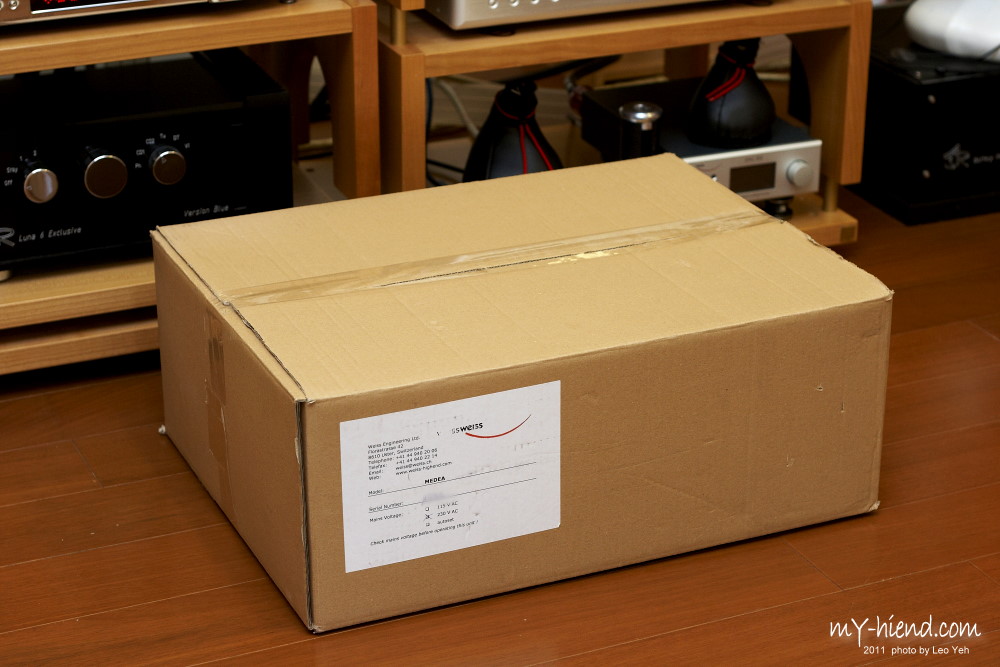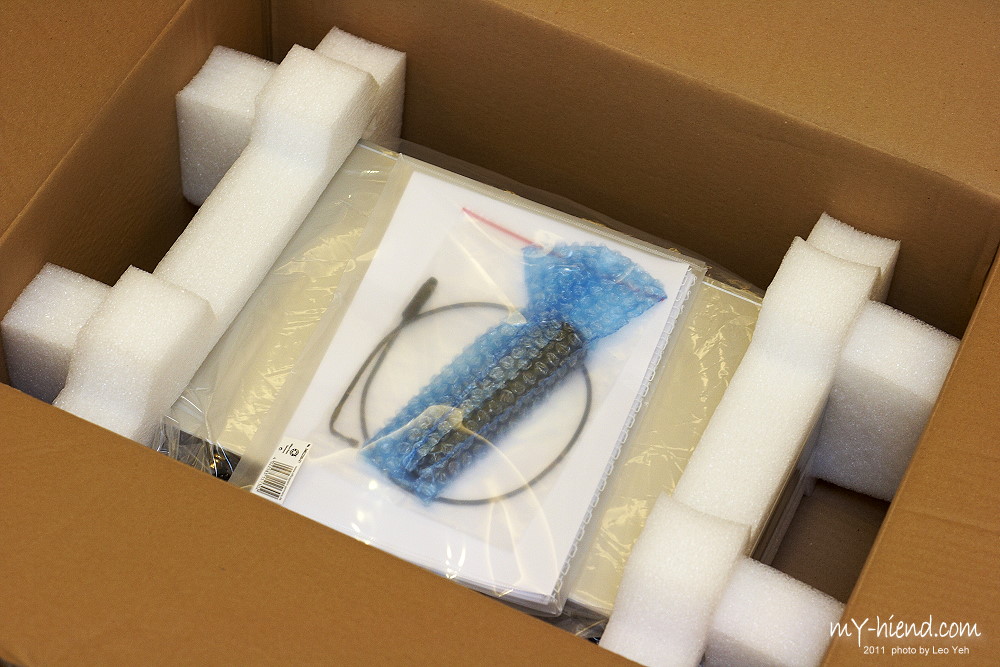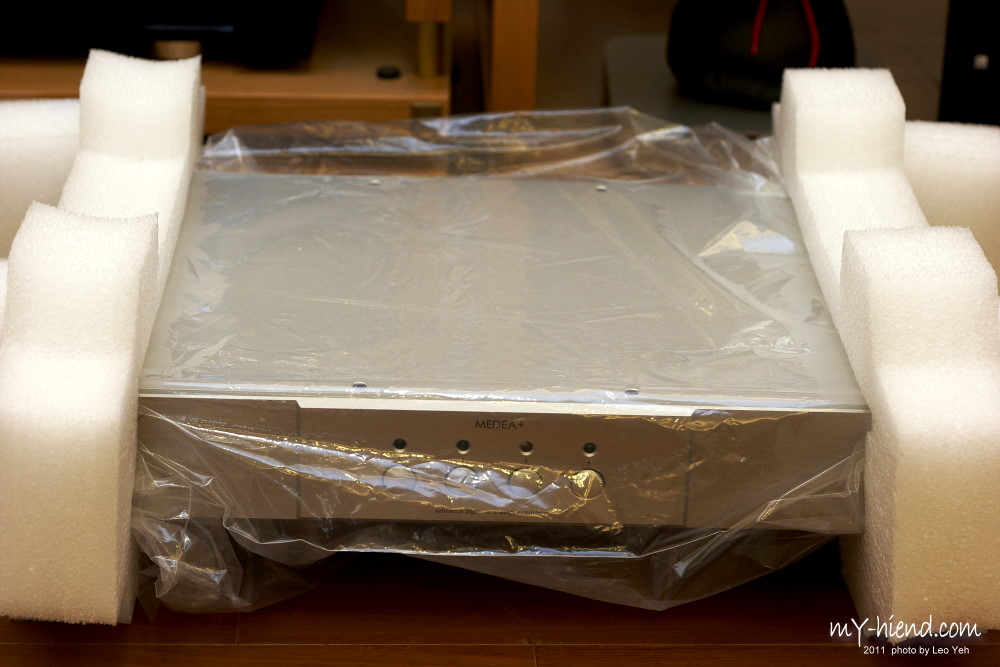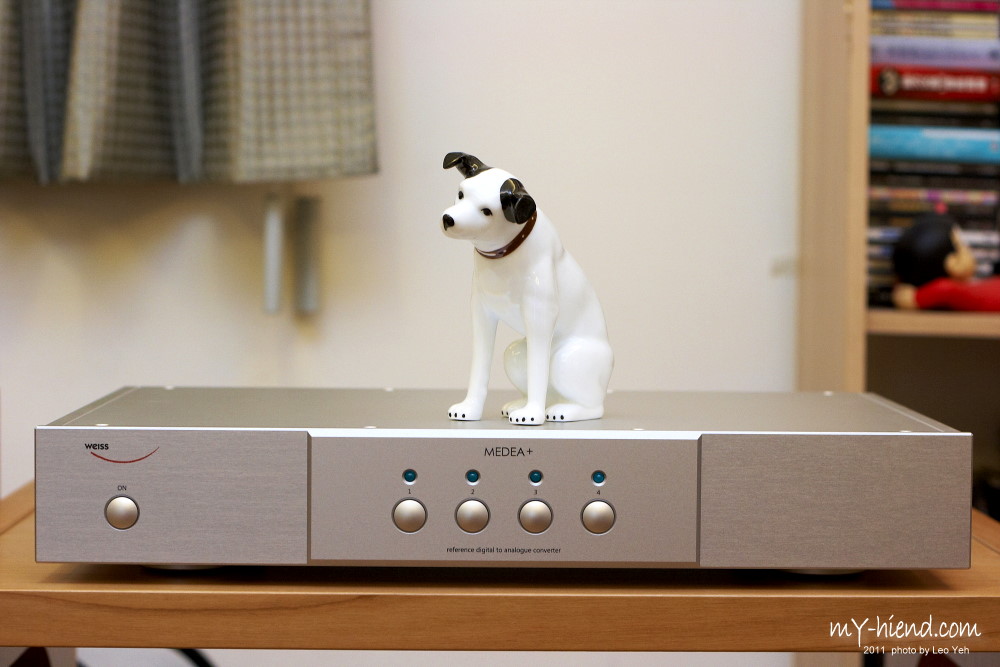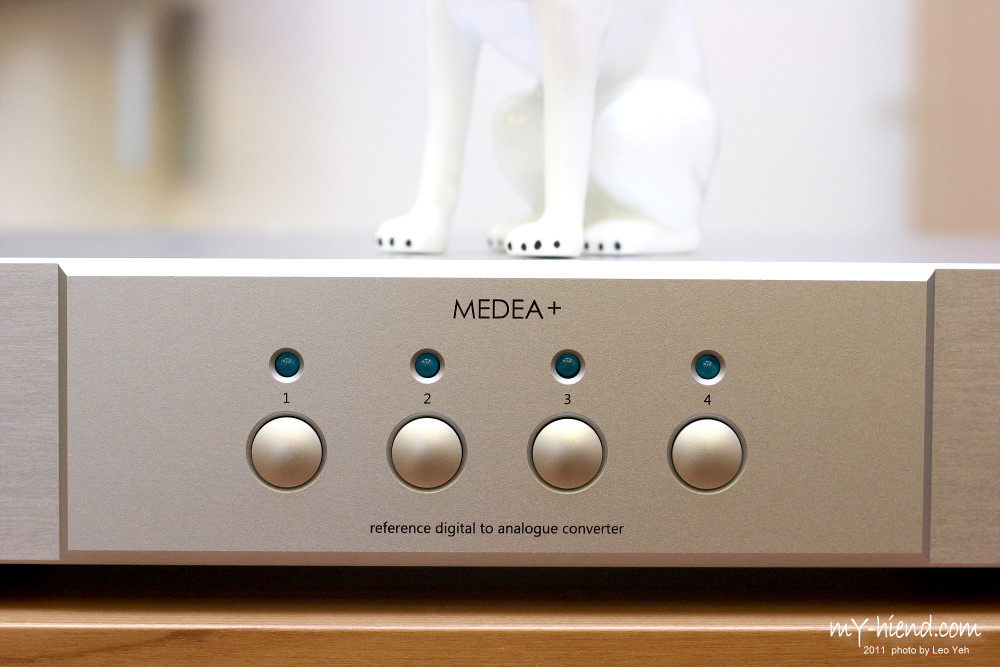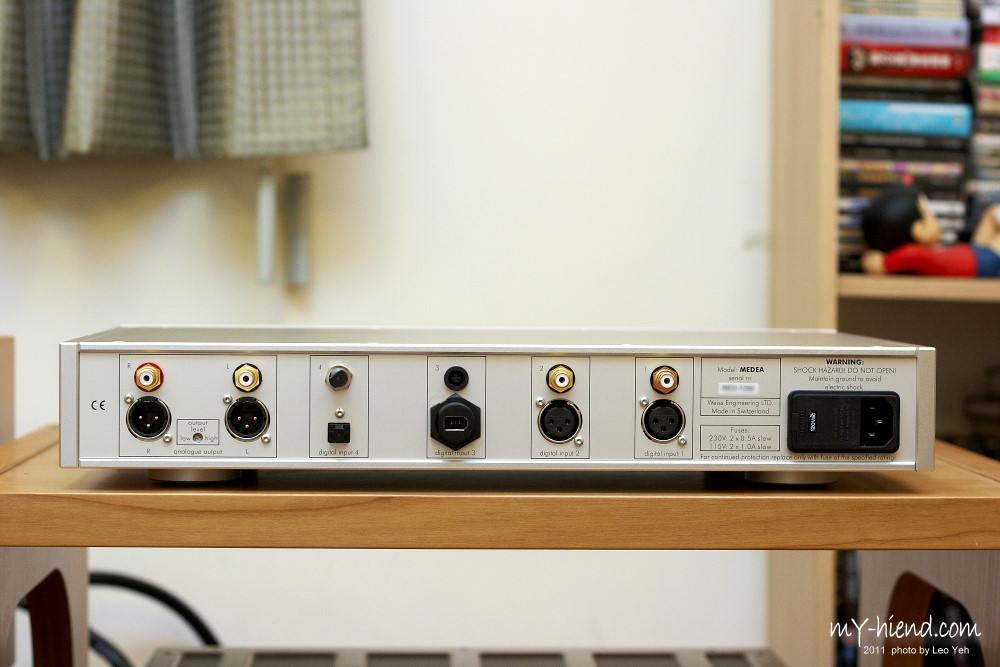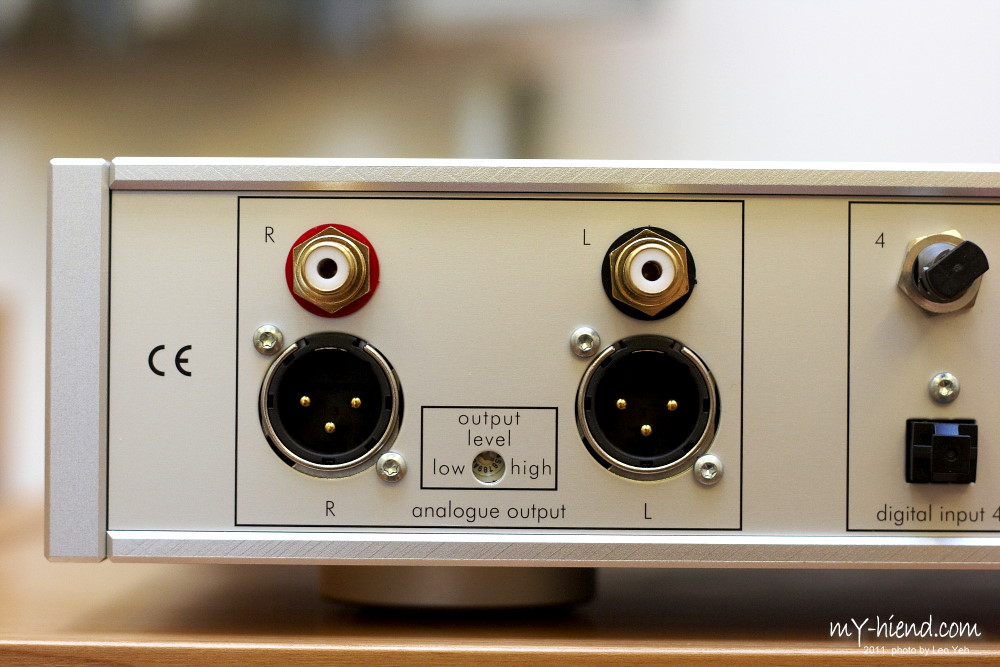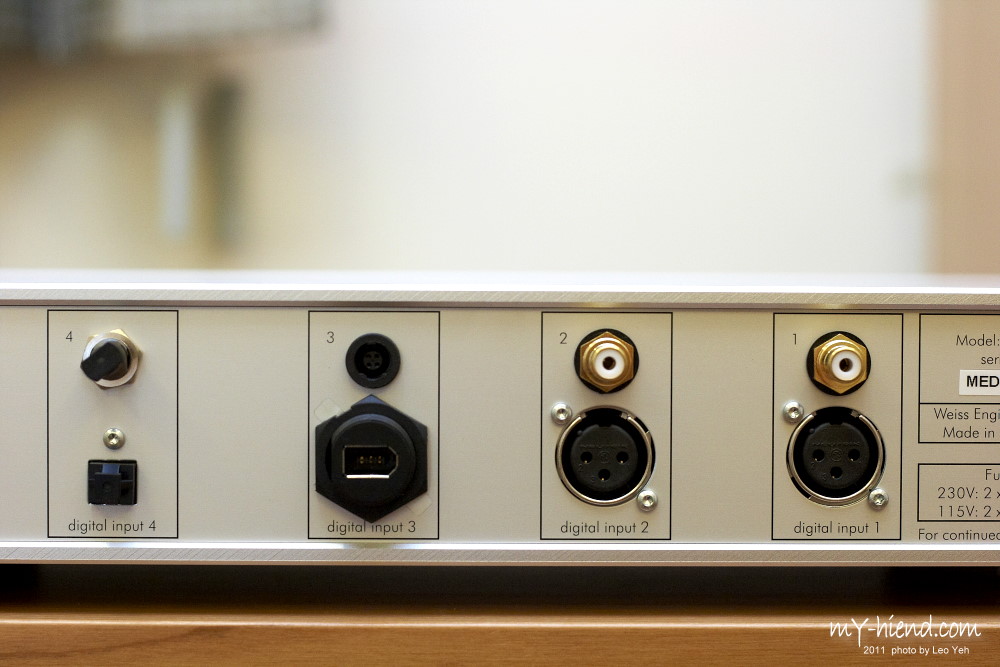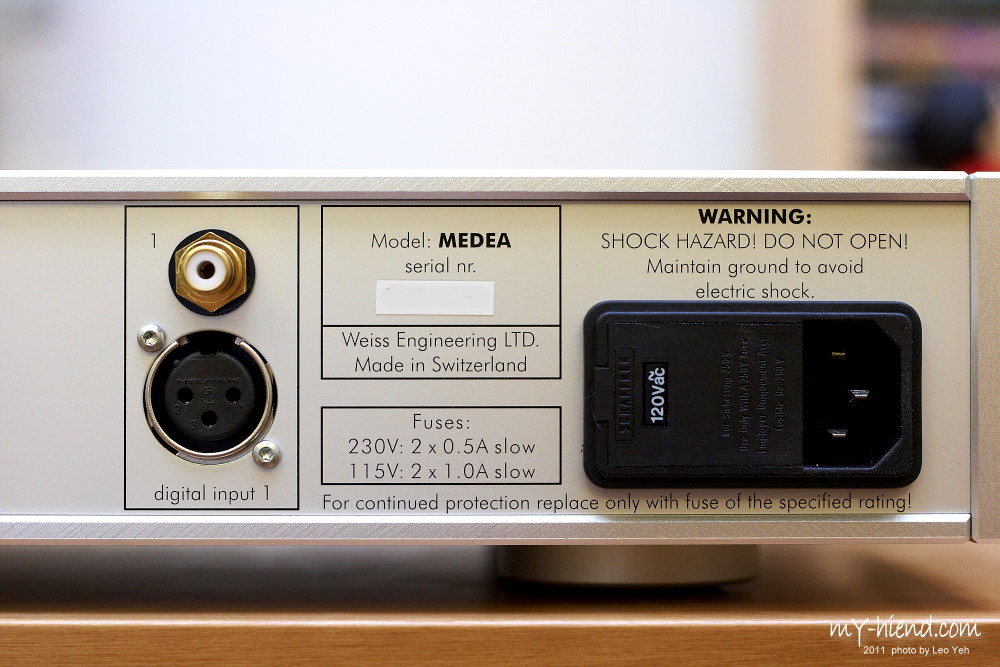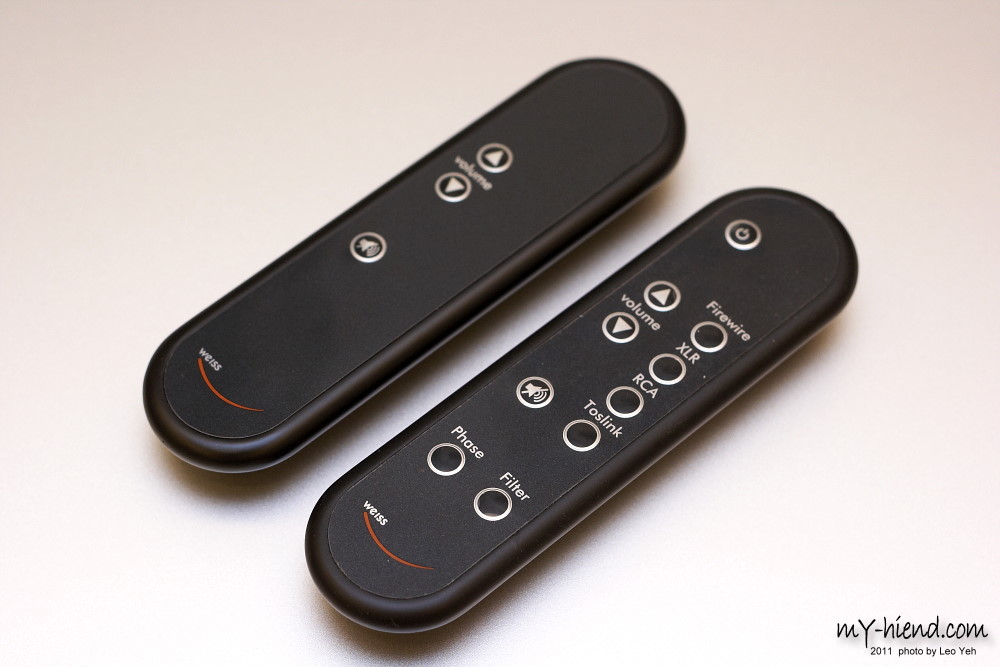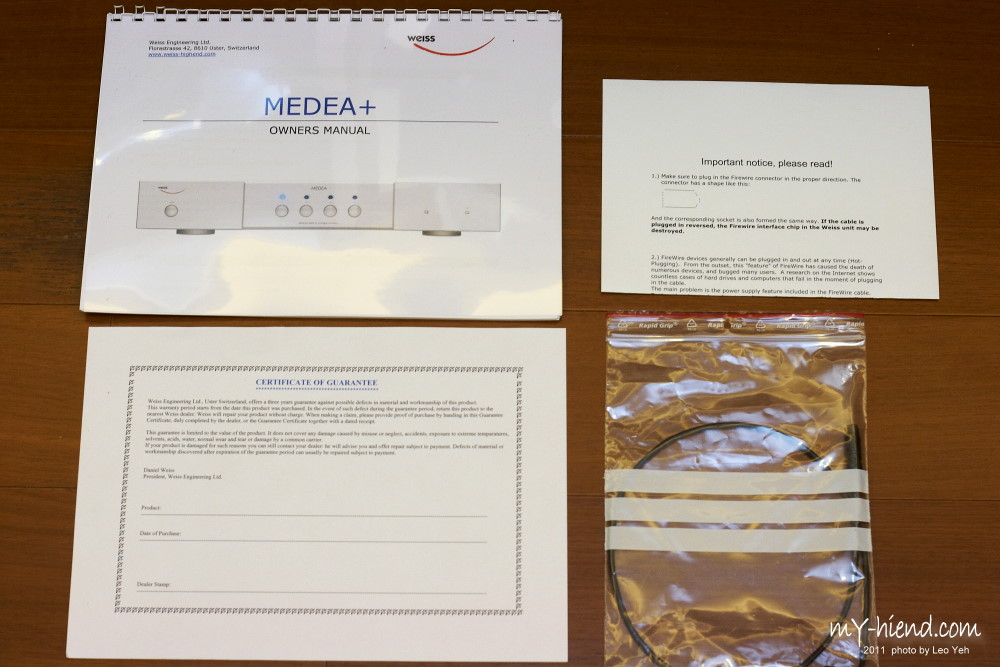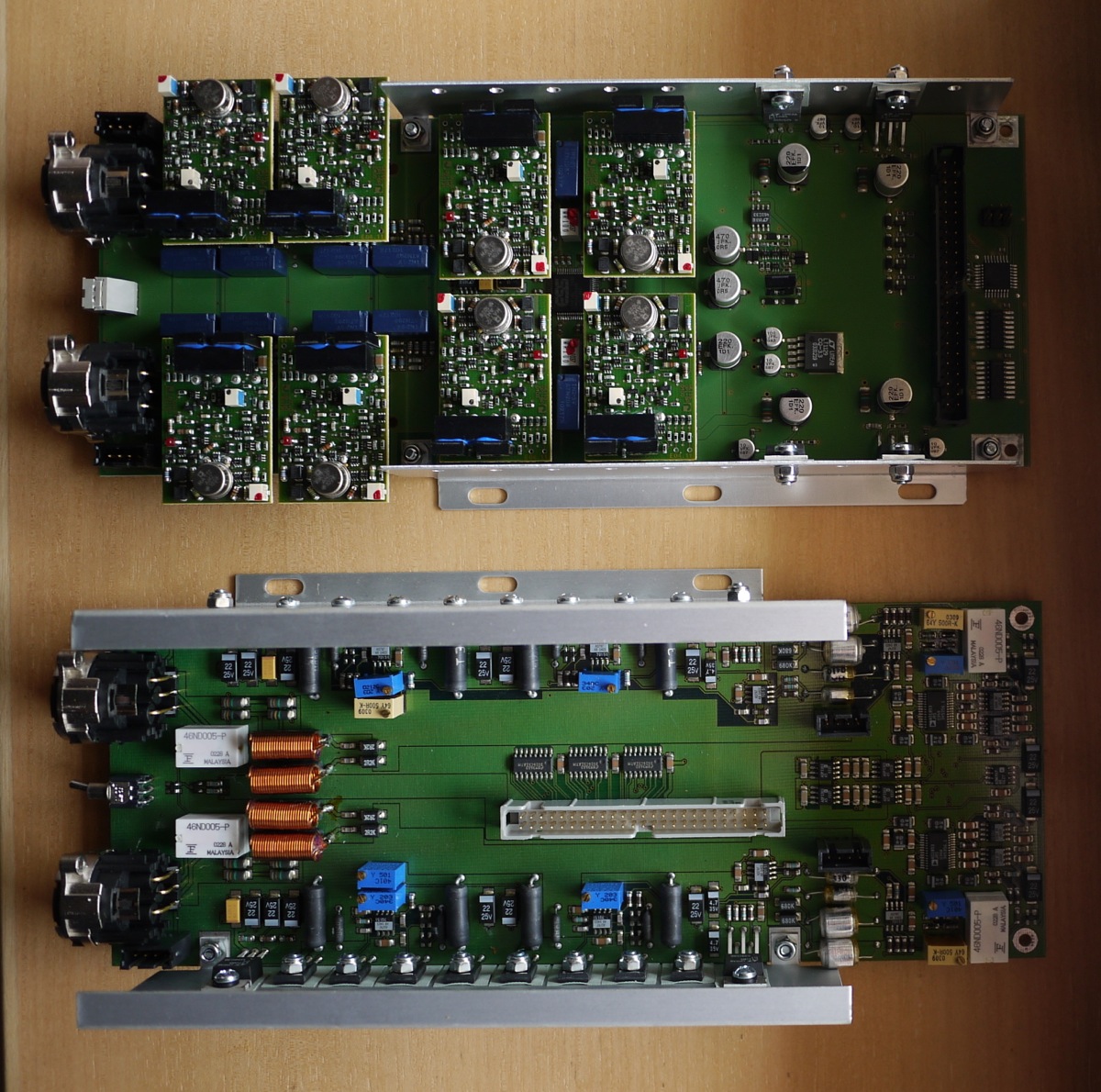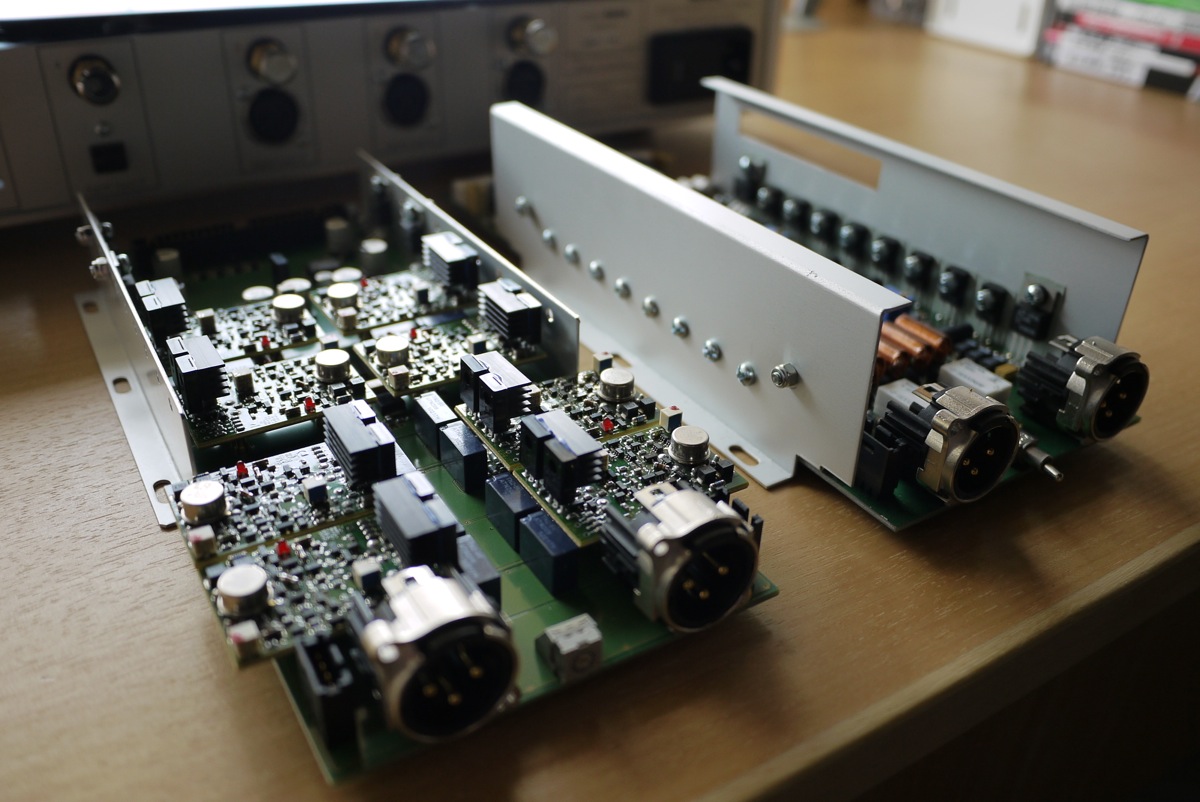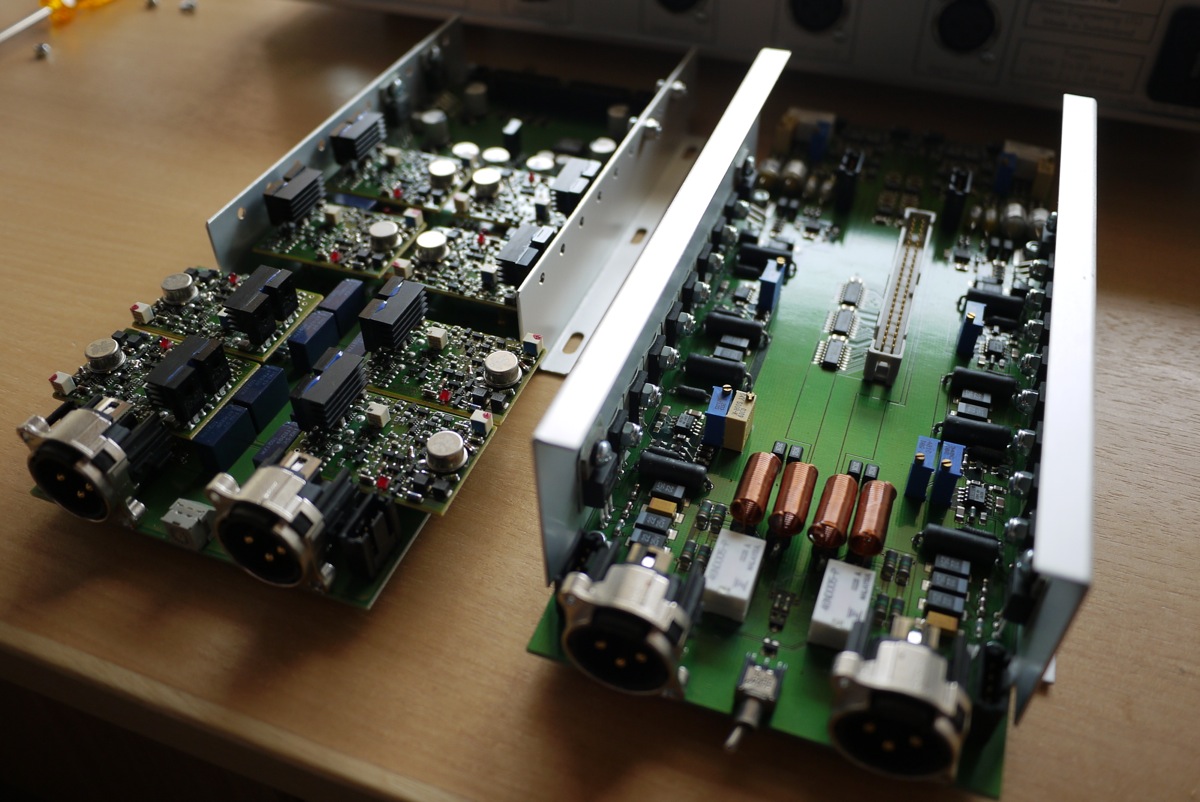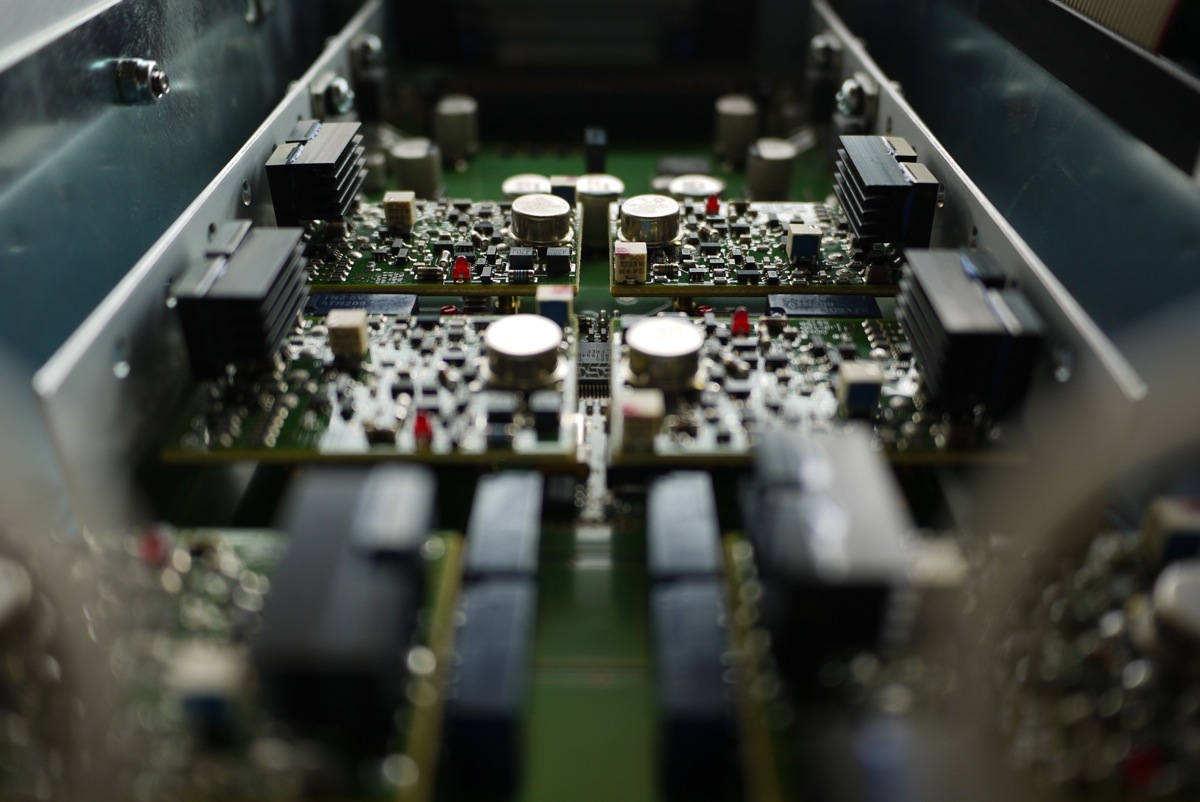Weiss Medea Plus DAC
- Thread starter AudioExplorations
- Start date
-
- Tags
- weiss
You are using an out of date browser. It may not display this or other websites correctly.
You should upgrade or use an alternative browser.
You should upgrade or use an alternative browser.
The design uses the Sabre 32bit ESS9018 32bit DAC chip and the output stage utilizes 8 x Weiss' SOTA OP1-BP high performance discrete bipolar operational amplifiers, arguably the best discrete audio op-amps currently available.

More info: http://designwsound.com/dwsblog/2011/12/medeaop1-bp-board/
OP1-BP brochure
OP1-BP data sheet

More info: http://designwsound.com/dwsblog/2011/12/medeaop1-bp-board/
OP1-BP brochure
OP1-BP data sheet
Last edited:
HI...thanks for doing this...i am seriously interested in knowing more about this unit. I have heard Weiss in the past and walked out 'feeling cold'...but that was 3-4 years ago. I have heard from many people and read that this particularly Medea + is a big step up. The reason is that, as posted elsewhere here, i have found no replacement for my Zanden that i prefer more...but i have been tempted hard by the STahl-Tek Opus Vekian. Someone mentioned that Keith of Purite Audio felt the Medea + surpasses it...he sells both. I prefer to speak with individuals and consumers for the moment.
thanks for comments on the Medea + vs other DACs!
thanks for comments on the Medea + vs other DACs!
Hi Lloydelee, I have a Medea Plus on the way, should have it next week. I have had an original Medea for some time now and it is a perfect fit for me for three reasons. First it is the most resolving and transparent converter I have personally heard; it has virtually no sonic character of it's own and the result is a sound that is nothing short of sublime. The detail in the bass, transients, air between the instruments, and timbral accuracy is breathtaking. This criteria of transparency is what I base all my purchasing decisions on. Second is the power amp sensitivity matching it allows through the adjustment of the output voltage. You set the output voltage to whatever amount of volume you would ever want, and then fine tune the volume during listening with properly attenuated 32-bit digital volume control (or add an analogue preamp where you would need minimal use of the volume control). Third is the robustness of the analogue output stage which will drive any power amp with ease. The last two points make it perfect for use in a power amp direct configuration which is the purest and most transparent signal path possible.
Yes you need to be weary of what dealer say about equipment, I know Keith states quite openly that he believes the Medea+ tops the Stahl-Tek. There are also accounts in various places on the web where people say the Medea+ knocks the dCs scarlatti off it's throne. I personally cannot make any such claims as I am unfamiliar with these units, but I can certainly let you know what I think of the Medea+ vs. the Medea which I am very familiar with.
Yes you need to be weary of what dealer say about equipment, I know Keith states quite openly that he believes the Medea+ tops the Stahl-Tek. There are also accounts in various places on the web where people say the Medea+ knocks the dCs scarlatti off it's throne. I personally cannot make any such claims as I am unfamiliar with these units, but I can certainly let you know what I think of the Medea+ vs. the Medea which I am very familiar with.
Hi Lloydelee, I have a Medea Plus on the way, should have it next week. I have had an original Medea for some time now and it is a perfect fit for me for three reasons. First it is the most resolving and transparent converter I have personally heard; it has virtually no sonic character of it's own and the result is a sound that is nothing short of sublime. The detail in the bass, transients, air between the instruments, and timbral accuracy is breathtaking. This criteria of transparency is what I base all my purchasing decisions on. Second is the power amp sensitivity matching it allows through the adjustment of the output voltage. You set the output voltage to whatever amount of volume you would ever want, and then fine tune the volume during listening with properly attenuated 32-bit digital volume control (or add an analogue preamp where you would need minimal use of the volume control). Third is the robustness of the analogue output stage which will drive any power amp with ease. The last two points make it perfect for use in a power amp direct configuration which is the purest and most transparent signal path possible.
Yes you need to be weary of what dealer say about equipment, I know Keith states quite openly that he believes the Medea+ tops the Stahl-Tek. There are also accounts in various places on the web where people say the Medea+ knocks the dCs scarlatti off it's throne. I personally cannot make any such claims as I am unfamiliar with these units, but I can certainly let you know what I think of the Medea+ vs. the Medea which I am very familiar with.
Thanks, AudioE - great and look forward to reading more about your thoughts on this. I have heard the original Medea many, many years ago. I also have heard the DCS Scarlatti and auditioned it quite seriously...so i can understand your description of Medea+ if you were to compare to those 2. If you have also heard Meridien 808.2, Wadia s7, ARC CD7 or CD8 or Zanden, i also have spent time with those as well. For me and my ears, I like my Zanden for its tonality...its detail and noise floor do not compare to the Scarlatti. But i prefer to keep purity of tonality over the last bit of noise floor and detail...which i have found in the Scarlatti. this is why i did not trade for it when i had the chance. However, i am most intrigued by Vekian because in the system i heard, the tonality was quite good, and its noise floor.detail retreival and micro/macro dynamics astonishing. I have not heard the newer Opus...but when i hear something beats the Vekian Opus (Medea +), i have to know more!!
Last edited:
I spent last night listening extensively to the Medea Plus. Although I was expecting an improvement over the Medea I was expecting it to be somewhat subtle given my past experience trying out various DAC's in my system. The improvement is not subtle at all- it is quite remarkable in fact. It sounds cleaner, more refined and more resolving than the previous Medea. I am hearing microdynamic details and nuances of music that I have never heard before. The soundstage has improved also; I am getting more height cues and the general sound stage is now set at or in front of the plane of the speakers whereas with the previous Medea it was set further behind the speakers (a characteristic which is common with the DAC2 and DAC202 also). It takes everything I have loved about the Medea and does it just that bit better. This is amazing as the original Medea is widely considered to be one of the best digital converters available.
Listening was carried out with the Medea Plus connected to the Mac Mini with a FireWire cable (Oyade Neo+) and with the Medea I had to use the M2Tech HiFace along with a digital S/PDIF cable as it had no FW input. The Medea Plus therefore has a much cleaner signal transmission where jitter is essentially taken out of the equation and this might account for some of the sonic improvements.
Listening was carried out with the Medea Plus connected to the Mac Mini with a FireWire cable (Oyade Neo+) and with the Medea I had to use the M2Tech HiFace along with a digital S/PDIF cable as it had no FW input. The Medea Plus therefore has a much cleaner signal transmission where jitter is essentially taken out of the equation and this might account for some of the sonic improvements.
Last edited:
congrats! Sounds like a winner. Enjoy! Any initial thoughts on how it compares to NOS tube DACS (like Zanden which is a 'flavor' i quite like...though i acknowledge newer SOTA DACS like DCS Scarlatti have lower noise floors and superior detail retrieval). thanks!
I am not really able to comment, the only tube DAC I know well is the Wavelength Cosecant and this also had a 'flavor' or its own. A very enjoyable DAC but I preferred the Medea. To me the strongest underlying trait of the Medea is that it is void of any 'flavor' and just lets the music through in the most unadulterated way possible. The 'flavor' of the recording is determined by the artist and mastering engineer and this keeps you at the edge of you seat cause every recording sounds different.
Sorry that was not much help, if you can arrange a trail of this DAC I highly recommend it.
Sorry that was not much help, if you can arrange a trail of this DAC I highly recommend it.
Last edited:
Measurements of the Medea+ DAC posted on Kent Poon's Audio blog:
http://designwsound.com/dwsblog/2012/09/weiss-medea-measurements/
Can anyone comment as to what these measurements tell us? Particularly the frequency response plot as it seems to roll off, or is this minimal as the scale is set at +1dB to -3dB?
http://designwsound.com/dwsblog/2012/09/weiss-medea-measurements/
Can anyone comment as to what these measurements tell us? Particularly the frequency response plot as it seems to roll off, or is this minimal as the scale is set at +1dB to -3dB?
Measurements of the Medea+ DAC posted on Kent Poon's Audio blog:
http://designwsound.com/dwsblog/2012/09/weiss-medea-measurements/
Can anyone comment as to what these measurements tell us? Particularly the frequency response plot as it seems to roll off, or is this minimal as the scale is set at +1dB to -3dB?
Opus111? Where are you?
I've taken a look at the plots that Kent has made - both the FR and the THD+N plots are interesting, in differing ways.
Firstly the FR plot is most definitely rolled off, almost half a dB down at 20kHz. Its clear this was not a plot made at 44k1 or the line would drop off the paper above 22kHz. So I surmise that the roll-off is a deliberate decision to filter in the analog domain circuitry. not what I'd expect from a DAC at this price level, to my mind this constitutes a slight colouration.
The THD+N plot tells us something about the DAC - which is I understand an ESS Sabre. The dynamic range is impressive at 130dB but rather unfortunately the dynamic range is not maintained when the signal level rises above -40dB. Eyeballing the line shows a clear kink in the otherwise perfect trajectory. In going from -40dB to -30dB the signal goes up 10dB but residual D+N, which previously held constant climbs 6dB. This is classic noise modulation as the FFT plot shows the residual to be very unlikely to be distortion - that's going to be a much lower level. Noise modulation is a well known phenomenon with sigma-delta type DACs but its very interesting to see it on an ESS device because ESS are the leaders in understanding this kind of artifact IMO.
I conjecture that the subjective impact of this noise floor modulation will be reduced 'PRaT' - the rhythmic impact of this DAC is going to be somewhat blunted.
Firstly the FR plot is most definitely rolled off, almost half a dB down at 20kHz. Its clear this was not a plot made at 44k1 or the line would drop off the paper above 22kHz. So I surmise that the roll-off is a deliberate decision to filter in the analog domain circuitry. not what I'd expect from a DAC at this price level, to my mind this constitutes a slight colouration.
The THD+N plot tells us something about the DAC - which is I understand an ESS Sabre. The dynamic range is impressive at 130dB but rather unfortunately the dynamic range is not maintained when the signal level rises above -40dB. Eyeballing the line shows a clear kink in the otherwise perfect trajectory. In going from -40dB to -30dB the signal goes up 10dB but residual D+N, which previously held constant climbs 6dB. This is classic noise modulation as the FFT plot shows the residual to be very unlikely to be distortion - that's going to be a much lower level. Noise modulation is a well known phenomenon with sigma-delta type DACs but its very interesting to see it on an ESS device because ESS are the leaders in understanding this kind of artifact IMO.
I conjecture that the subjective impact of this noise floor modulation will be reduced 'PRaT' - the rhythmic impact of this DAC is going to be somewhat blunted.
I've taken a look at the plots that Kent has made - both the FR and the THD+N plots are interesting, in differing ways.
Firstly the FR plot is most definitely rolled off, almost half a dB down at 20kHz. Its clear this was not a plot made at 44k1 or the line would drop off the paper above 22kHz. So I surmise that the roll-off is a deliberate decision to filter in the analog domain circuitry. not what I'd expect from a DAC at this price level, to my mind this constitutes a slight colouration.
The THD+N plot tells us something about the DAC - which is I understand an ESS Sabre. The dynamic range is impressive at 130dB but rather unfortunately the dynamic range is not maintained when the signal level rises above -40dB. Eyeballing the line shows a clear kink in the otherwise perfect trajectory. In going from -40dB to -30dB the signal goes up 10dB but residual D+N, which previously held constant climbs 6dB. This is classic noise modulation as the FFT plot shows the residual to be very unlikely to be distortion - that's going to be a much lower level. Noise modulation is a well known phenomenon with sigma-delta type DACs but its very interesting to see it on an ESS device because ESS are the leaders in understanding this kind of artifact IMO.
I conjecture that the subjective impact of this noise floor modulation will be reduced 'PRaT' - the rhythmic impact of this DAC is going to be somewhat blunted.
Thanks again for taking the time, Opus111.
Audio Explorations you have lived with this DAC for a few months now and i am curious to see if you are still impressed with the sound as much as you were when you first recieved it? I find you need to live with a componenet for a period of time to really get a sense of it's performance.
Hi SA, I absolutely love the Medea+, it's resolving power continues to impress me on a daily basis. I have not heard any competing products in a similar class so I cannot say that it outperforms solutions from companies such as dCS, MSB, EMM Labs, Esoteric, Wadia, etc. In any case functionally it is an absolutely perfect solution for me given I run power amp direct and this unit is able to properly drive my power amp at a custom set voltage level requiring very little use of digital volume control.
I'm glad your still enjoying it Audio Explorations even after the honeymoon is over so to speak, i recently auditioned a DAC1 mk3 and it is quite an impressive sounding dac. The variable voltage output seems a no brainer for me especially for a single digital source setup but no other manufacture seems to implement it. Reading some of opus 111 comments regarding internal components and specs has been interesting it seems the dac has the potential to sound even better but i guess that is the case for any dac. The only feature i would like to see implemented from weiss is all sampling rates especially DSD and 2 x DSD.
Similar threads
- Replies
- 37
- Views
- 11K
- Replies
- 5
- Views
- 2K
- Replies
- 3
- Views
- 3K
- Replies
- 1
- Views
- 190
| Steve Williams Site Founder | Site Owner | Administrator | Ron Resnick Site Owner | Administrator | Julian (The Fixer) Website Build | Marketing Managersing |


